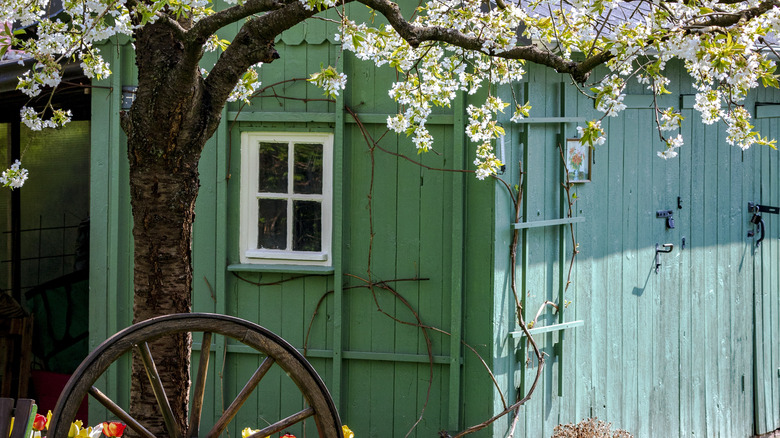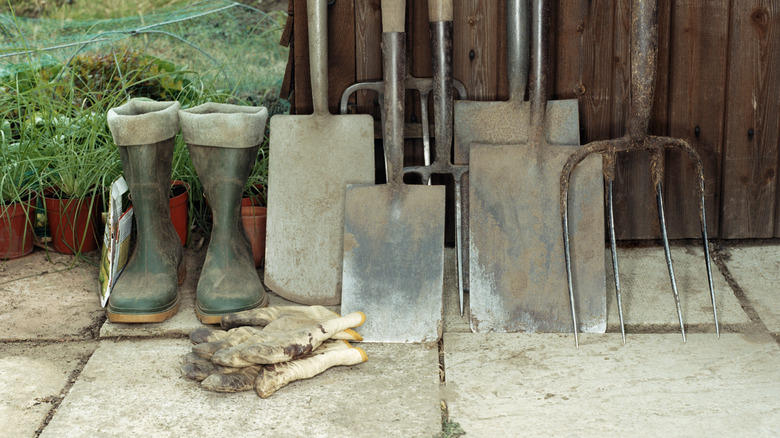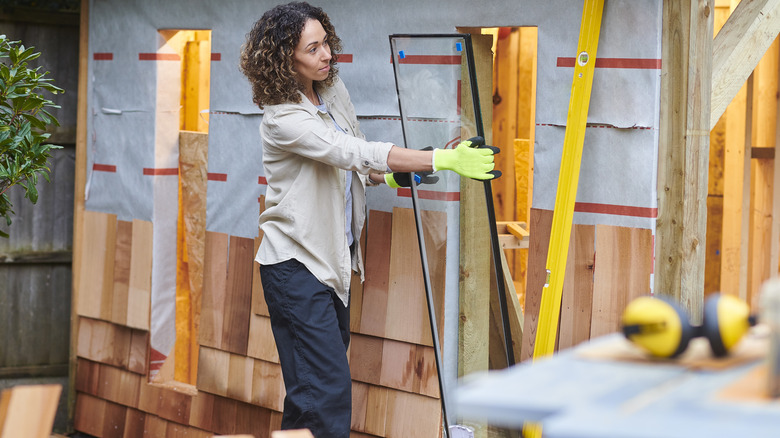The Simple Storage Shed Foundation You Can DIY On A Tight Budget
An important aspect of designing the perfect storage shed is ensuring that its foundation will hold the structure evenly in place — without setting you back financially. There are plenty of shed foundation options out there, ranging from concrete piers and a timber frame to concrete blocks and gravel. But installing concrete piers and building timber foundations is pricey, and labor-intensive enough to not qualify as a simple DIY task. Meanwhile, gravel foundations don't work too well with sheds that don't have a floor. Paver foundations are the happy middle ground. Whether your shed has a floor or not, you can place it on pavers and still be comfortable inside it. Also, pavers don't cost much; you can get them for as little as $9 a piece.
Building a paver shed foundation doesn't require much expertise or effort, especially if you choose large, 24x24-inch pavers. This way you don't need to handle as many of them. The biggest challenge is excavating the site, as you'll need to make sure the substrate is level and compacted. Then all you need to do is lay down a granular layer and install the pavers — these steps are relatively simple. Below, we'll show you how.
How to install a shed on a paver foundation
First, determine the foundation width and length. Ideally, it should be at least 1 foot wider and longer than the dimensions of the shed. However, if needed, you can go with a larger size to make sure all the pavers fit perfectly and don't need any field-cutting. Next, insert pegs or garden stakes at its four corners and connect them with a string to mark the foundation perimeter. Now, use a spade to remove the top layer of the soil, and haul the excavated material away. Then, make sure that the excavated area is level. To do this quickly, attach a level to an 8-foot plank and check the surface in several locations, then correct by excavating or backfilling as needed. Finally, use a tamper tool to compact the soil.
Before laying the pavers, you should put down a base. Either sand or gravel is fine, but if you're on a budget, opting for sand could save you about $10 per yard of the material. Distribute this layer evenly over the compacted soil, then compact it again with the tamper and check it with the level. At this point, you can lay down the pavers, starting from the corners of the foundation and working your way inward. Tap them gently into the substrate with a rubber mallet until they align with the adjacent pavers. When they're all in place, fill the gaps between them with the remaining sand. That's it — the foundation is ready!
Shed construction permitting and other requirements
Like any structure you erect on your property, sheds are subject to certain design and construction guidelines and must be compliant with local codes. Some of these may relate to the foundation. For example, in some jurisdictions, the shed cannot not be permanently attached to the foundation. Also, some cities and counties may require you to keep the shed a certain distance away from the property line if it's made from a flammable material such as wood and vinyl. In New York City, sheds made with combustible materials should be set back 3 feet from the lot boundary. Likewise, New York limits the maximum allowable height of a shed to 7 feet and 6 inches — whether you're getting a permit or not. You should check these constraints before you build the shed.
Depending on the type of shed you're putting up, you may need a building permit. Before you start laying the foundation, you should find out whether you can DIY a shed without a permit. If a permit is needed, you'll need to submit plans (including the foundation) for review at your local building department.
Across most of the country, sheds with a footprint smaller than 120 square feet don't require a permit. However, some jurisdictions have other criteria you must meet to be exempt from mandatory permitting. For example, local codes may still require a permit if the shed exceeds a certain height, or is equipped with plumbing or electrical connections.


